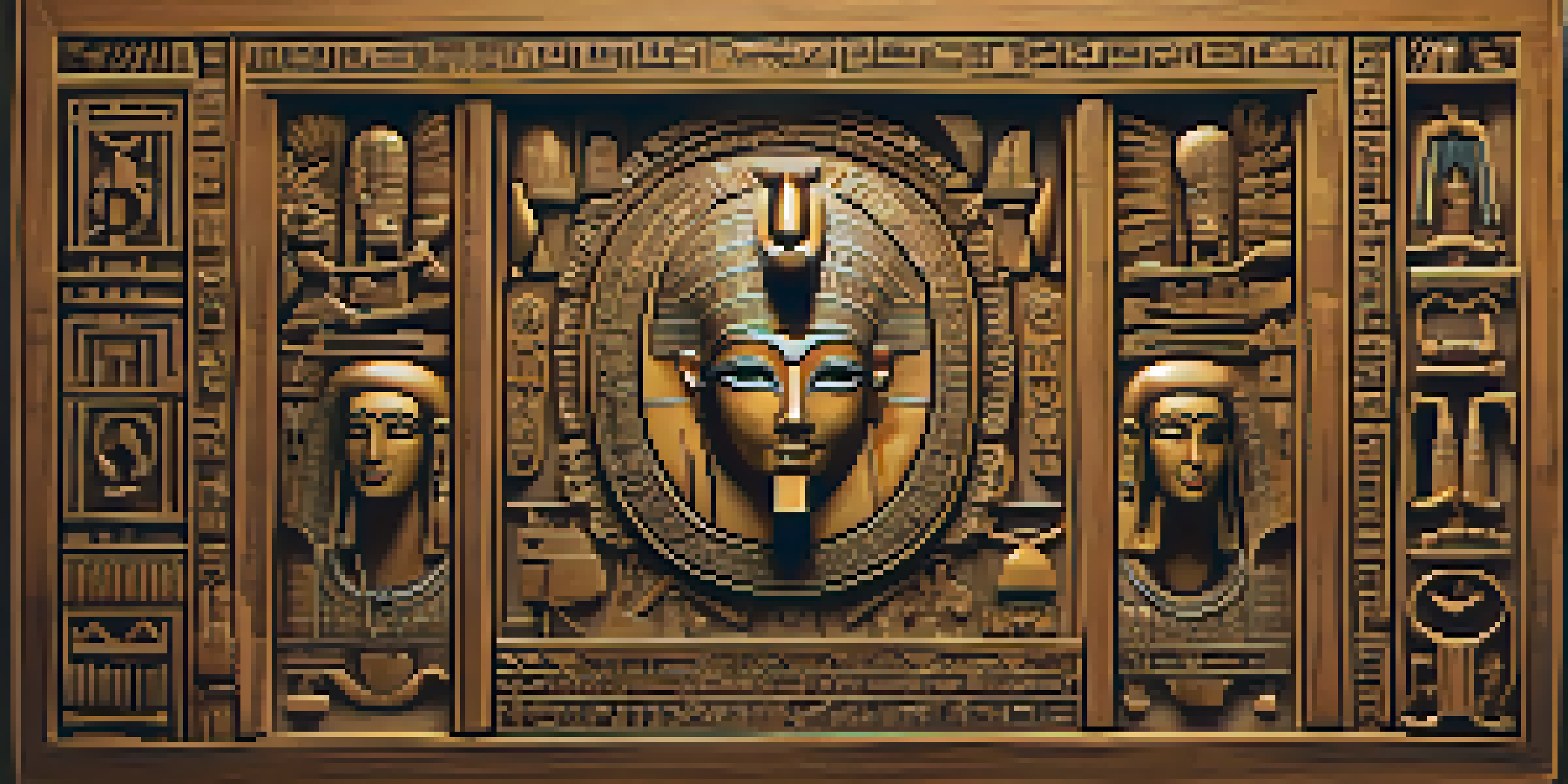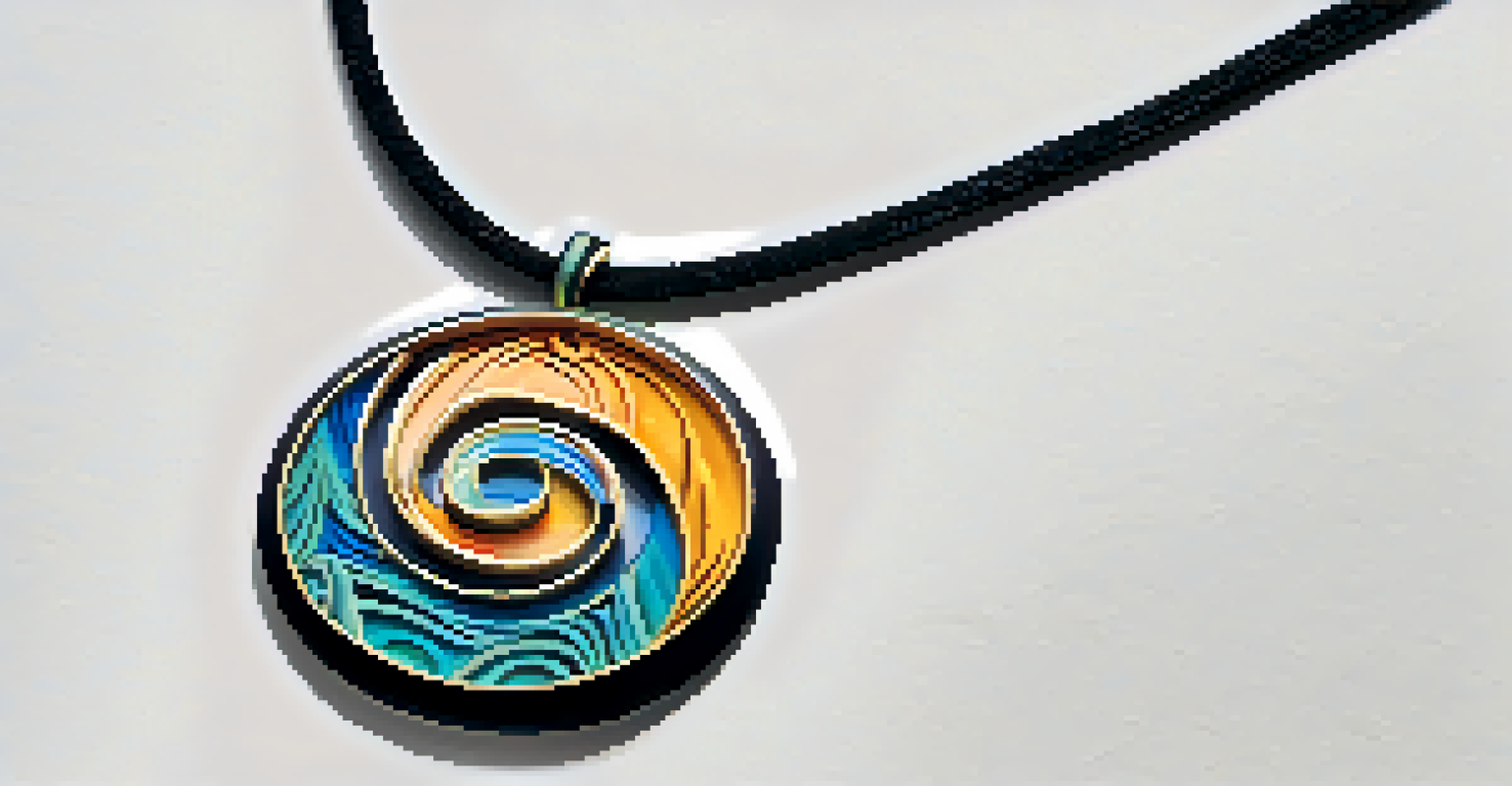Exploring the History of Carved Jewelry Through the Ages

The Origins of Carved Jewelry in Ancient Civilizations
Carved jewelry dates back thousands of years, with ancient civilizations using natural materials to create artistic adornments. In Egypt, for instance, artisans crafted intricate pieces from wood, stone, and even clay, often featuring symbols of the gods.
Jewelry is a way of keeping memories alive, a way of telling stories that are often lost in the passage of time.
Similarly, in Mesopotamia, jewelry was often made from gemstones and metals, showcasing the skill and creativity of craftsmen. The use of carving not only added beauty but also imbued pieces with cultural significance, making them cherished possessions.
These early creations set the stage for a tradition that would evolve over centuries, reflecting the values, beliefs, and artistic styles of each era. As trade routes expanded, so too did the materials and techniques used in carved jewelry.
The Significance of Carved Jewelry in Ancient Cultures
In many ancient societies, carved jewelry served more than just an aesthetic purpose; it held symbolic meaning and status. For instance, in ancient Rome, rings with intaglio carvings were often used as signet rings, bearing family crests or personal emblems.

These pieces were not only fashion statements but also conveyed messages about identity and social status. Similarly, in Native American cultures, carved jewelry often featured totemic designs that connected the wearer to their ancestry and spiritual beliefs.
Carved Jewelry's Ancient Roots
Carved jewelry has a rich history, originating in ancient civilizations where artisans used natural materials to create meaningful and symbolic adornments.
The intricate carvings in these pieces became a language of their own, speaking to the values and stories of their makers. This significance has carried through time, influencing modern interpretations of carved jewelry.
Renaissance Revival: A Flourish of Carved Jewelry
The Renaissance period marked a rebirth of interest in the arts, including jewelry-making. During this time, carved cameos and intaglios became particularly popular, showcasing exquisite detail and craftsmanship.
Art is not a thing; it is a way. Jewelry is a form of art that expresses our identity and connects us to our history.
Artisans would often depict mythological scenes or portraits, turning jewelry into miniature works of art. This era also saw the introduction of new materials like glass and ivory, which allowed for even more intricate designs.
As wealth and trade flourished, so did the demand for unique, personalized jewelry, leading to a golden age of creativity in carved pieces. This revival not only influenced styles for centuries but also enhanced the appreciation of craftsmanship in jewelry.
Victorian Era: Symbolism and Mourning Jewelry
The Victorian era brought a unique twist to carved jewelry, with the rise of mourning pieces becoming particularly significant. Jewelry carved from jet or onyx often featured intricate designs symbolizing grief and remembrance for lost loved ones.
These pieces, sometimes adorned with hair from the deceased, served as poignant reminders of love and loss. The artistry involved in creating such pieces reflected the deep emotional connection people had with their jewelry.
Symbolism in Carved Jewelry
Throughout history, carved jewelry has represented social status and personal identity, reflecting the cultural values and stories of its makers.
This era highlighted how carved jewelry could encapsulate personal stories and emotions, transforming adornments into cherished heirlooms. The significance of these pieces continues to resonate with collectors and historians today.
Art Nouveau: A New Wave of Artistic Expression
The Art Nouveau movement in the late 19th and early 20th centuries introduced a fresh approach to carved jewelry, emphasizing organic forms and flowing lines. Artists like Alphonse Mucha inspired jewelers to incorporate nature-inspired motifs into their designs.
Carved pieces during this time often featured floral patterns and graceful curves, moving away from rigid classical forms. This artistic freedom allowed for more personal expression in jewelry, making each piece truly unique.
The emphasis on craftsmanship and the use of new materials, such as enamel, elevated the status of carved jewelry, merging art with everyday life. This movement paved the way for modern jewelry design, with its focus on individuality and creativity.
Modern Trends: Carved Jewelry in Contemporary Fashion
In today's fashion landscape, carved jewelry continues to evolve, blending traditional techniques with modern aesthetics. Contemporary designers often experiment with unconventional materials like resin and acrylic, pushing the boundaries of what carved jewelry can be.
Social media platforms have also played a significant role in popularizing unique, handmade pieces, allowing artisans to showcase their work to a global audience. This accessibility has created a resurgence of interest in carved jewelry, as consumers seek out personalized and meaningful adornments.
Modern Evolution of Carved Jewelry
Today, carved jewelry blends traditional techniques with contemporary materials and designs, ensuring its relevance in modern fashion.
Moreover, the integration of technology in design processes has led to innovative carving techniques, making it easier to achieve intricate details. This fusion of old and new ensures that carved jewelry remains a vibrant part of fashion.
Preserving the Craft: The Future of Carved Jewelry
As we look to the future, the preservation of traditional carving techniques becomes essential. Many artisans are dedicated to keeping these skills alive, often passing them down through generations, ensuring the art of carved jewelry continues.
Workshops and classes have emerged, inviting new talent to explore this craft and innovate within it. The growing appreciation for handmade goods also encourages a resurgence in carved jewelry, as consumers increasingly value craftsmanship over mass-produced pieces.

Looking ahead, the balance between tradition and modernity will shape the future of carved jewelry. By embracing both heritage and innovation, the art form can thrive in new and exciting ways.